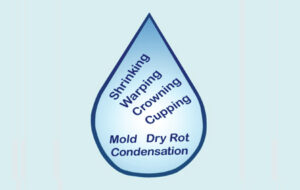Moisture Content of Wood
Nobody would worry about moisture in wood, if it would not be for shrinking and warping or the danger of mold development. Both problems have made the moisture content in wood an important factor. The first step in the prevention of moisture problems is knowing the moisture content of wood. But, it is actually not […]
Read More >

